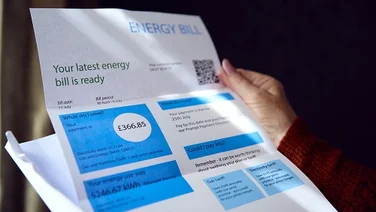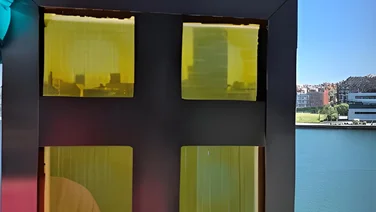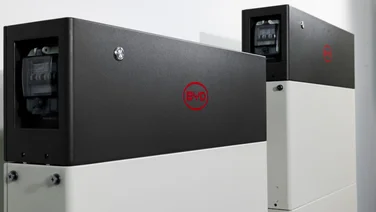- Flower turbines are an aesthetically pleasing alternative to traditional turbines
- When grouped in a ‘bouquet’ of 5, they provide 228% more energy per turbine
- The turbines begin to rotate as 0.7 m/s for maximum efficiency

An off-grid medium Tulip Wind Turbine comes to around £8,400
US-based renewable company Flower Turbines, has developed a wind turbine of the same name to rival traditional wind turbines and more recent wind fences.
The ‘flower turbine’ is designed to integrate into existing infrastructure with minimal disruption to urban settings.
The company said the ‘flower turbine’s aerodynamic shape makes them highly efficient, even in low-wind conditions, as they can capture wind from any direction.
As with other recent turbine innovations such as the wind fence, the turbines work even more efficiently in a group.
In a ‘bouquet’ of 5, 228% more energy per turbine is produced. This also enables a higher density of turbines to be installed per square foot, reducing the space required for installation. As an added bonus, Flower Turbines tested their product to find that the turbines are quieter than wind.
There is no one-size-fits-all solution for wind energy, and as such, flower turbines are designed to be scalable. Noise and cost are also taken into account, with advertised use from, “a company wanting to decrease its carbon footprint” to, “an individual who requires energy independence,” Flower Turbines says.
The cost of installation and maintenance is also relatively low compared to some domestic wind turbines, although it’s still a pricey investment.
An off-grid medium Tulip Wind Turbine comes to around £8,400, whereas a domestic wind turbine can come to anywhere between £2,000 and £70,000.
Coming in a wide range in colours, these turbines can blend in their surroundings or make a bold colourful statement. Additionally, you can choose to put a logo on the turbine for company purchases.
Flower Turbines is credited with winning the Dutch government’s Sustainability Award twice for their inventions, including the ZW charging pole.
Early models of their invention have been around since 2008 when Dr. Mark Daniel Farb founded Israeli company, Leviathan Energy. In 2013, Flower Turbines was incorporated in New York and the business has been based in Lawrence, New York since December 27 2019.
Flower Turbines says its turbines are extremely durable. They work in harsh weather conditions such as snow, and in a test, small and medium tulip turbines were put on the top of a truck and driven at 115 mph with no resulting issues. Furthermore, flower turbines begin to rotate as 0.7 m/s meaning that even a gentle breeze will generate electricity.
As well as durability, flower turbines take into consideration the surrounding environment and wildlife. Traditional wind farms face criticism for their potential threat to animals, especially birds. Death through collision or interaction with turbine blades is unfortunately common, and onshore wind farms also threaten habitat.
Flower turbines are created with the safety of birds in mind as the blades are curved inwards in a long vertical vessel, rather than branched like propellers.
Wind electricity generation has the second highest growth among all renewable power technologies, behind solar PV.
In 2022, wind electricity generation increased by a record 265 Terawatt hours (TWh), up 14%, but to keep in line with the Net Zero Emissions by 2050 Scenario, the average annual generation growth rate needs to increase to 17%.
Flower turbines are just one of the many energy solutions available to those wishing to reduce their reliance on fossil fuels.






